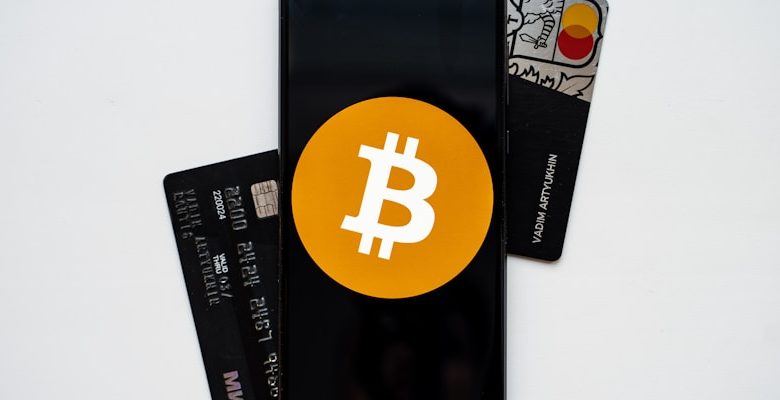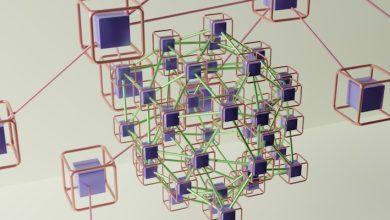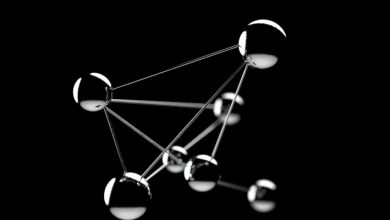IOTA (MIOTA): The Blockchain for the Internet of Things

- Understanding IOTA and its role in the Internet of Things
- How IOTA is revolutionizing the way devices communicate
- The benefits of using IOTA in IoT applications
- Exploring the scalability of IOTA for the growing IoT industry
- Challenges and opportunities for IOTA in the IoT ecosystem
- The future of IOTA as the leading blockchain for the Internet of Things
Understanding IOTA and its role in the Internet of Things
The Internet of Things (IoT) is a rapidly growing network of interconnected devices that collect and exchange data. IOTA is a unique blockchain technology specifically designed to facilitate transactions and data transfer within the IoT ecosystem. Unlike traditional blockchains that rely on mining and fees, IOTA operates on a system called the Tangle, which allows for feeless microtransactions between devices.
One of the key features of IOTA is its scalability. As the number of IoT devices continues to increase, IOTA’s feeless structure and lightweight design make it ideal for handling the vast amounts of data generated by these devices. This scalability ensures that the IoT ecosystem can continue to grow without being hindered by transaction fees or processing delays.
Another important aspect of IOTA is its focus on security. The Tangle system used by IOTA is inherently secure, as each new transaction must approve two previous transactions. This not only prevents double-spending but also makes the network more resistant to attacks. Additionally, IOTA’s quantum-proof cryptography ensures that the network remains secure even as quantum computing technology advances.
In conclusion, IOTA plays a crucial role in the Internet of Things by providing a scalable, feeless, and secure platform for devices to communicate and transact with each other. Its innovative Tangle technology sets it apart from traditional blockchains and makes it an ideal solution for the growing IoT ecosystem.
How IOTA is revolutionizing the way devices communicate
IOTA is revolutionizing the way devices communicate by introducing a new way for machines to securely and efficiently exchange data and value. Unlike traditional blockchains, IOTA does not rely on a central ledger. Instead, it uses a revolutionary technology called the Tangle, which allows for peer-to-peer transactions without fees.
With IOTA, devices can communicate directly with each other, enabling the Internet of Things (IoT) to reach its full potential. This means that devices can securely transfer data and value in real-time, opening up a whole new world of possibilities for industries such as healthcare, transportation, and smart cities.
By eliminating the need for intermediaries and fees, IOTA is making it easier and more cost-effective for devices to communicate. This not only streamlines processes but also enhances security and privacy, as there is no central point of failure for hackers to exploit.
Overall, IOTA is paving the way for a future where devices can communicate seamlessly and securely, ushering in a new era of innovation and connectivity in the world of IoT.
The benefits of using IOTA in IoT applications
Utilizing IOTA in Internet of Things (IoT) applications offers a multitude of benefits that set it apart from traditional blockchain technologies. One key advantage is the scalability of IOTA, allowing for seamless integration with a vast number of IoT devices without the need for transaction fees.
Additionally, the tangle structure of IOTA enables fast and efficient transactions, making it ideal for real-time data processing in IoT applications. This scalability and efficiency make IOTA a perfect fit for large-scale IoT deployments.
Moreover, the feeless nature of IOTA transactions eliminates barriers to microtransactions in IoT applications, enabling new business models and use cases that were previously unattainable with traditional blockchain technologies.
Exploring the scalability of IOTA for the growing IoT industry
In the rapidly expanding Internet of Things (IoT) industry, the scalability of IOTA is a crucial factor to consider. IOTA’s unique Tangle technology allows for increased scalability compared to traditional blockchain systems. This scalability is essential as the number of connected devices in the IoT ecosystem continues to grow exponentially.
One of the key advantages of IOTA for IoT applications is its ability to process microtransactions efficiently. These microtransactions are vital for machine-to-machine communication and value transfer within IoT networks. With IOTA, devices can securely and quickly exchange data and payments without incurring high fees or delays.
As the IoT industry continues to evolve, the demand for scalable and efficient solutions like IOTA will only increase. The ability of IOTA to handle a large number of transactions simultaneously makes it well-suited for the growing demands of the IoT ecosystem. This scalability sets IOTA apart from traditional blockchain networks, which can struggle to keep up with the vast amounts of data generated by IoT devices.
In conclusion, the scalability of IOTA makes it a promising candidate for the expanding IoT industry. Its unique Tangle technology, which allows for feeless and scalable transactions, positions IOTA as a frontrunner in enabling the seamless integration of IoT devices. As the IoT landscape continues to grow, IOTA’s scalability will play a vital role in shaping the future of connected devices and smart technologies.
Challenges and opportunities for IOTA in the IoT ecosystem
The Internet of Things (IoT) presents both challenges and opportunities for IOTA, the blockchain specifically designed for this ecosystem. One of the main challenges is the need for scalable and feeless transactions to accommodate the massive amount of microtransactions that IoT devices will generate. IOTA’s Tangle technology, which allows for secure data transfer and communication between devices, addresses this challenge by enabling feeless transactions and ensuring scalability. This unique feature sets IOTA apart from traditional blockchain solutions, making it an ideal candidate for the IoT environment.
Another challenge that IOTA faces in the IoT ecosystem is the interoperability of different devices and systems. As IoT devices come from various manufacturers and operate on different protocols, there is a need for a universal standard that can facilitate seamless communication between them. IOTA’s open-source platform and focus on standardization make it well-positioned to address this challenge by providing a common protocol for IoT devices to interact with each other.
Despite these challenges, IOTA also has significant opportunities in the IoT ecosystem. One such opportunity is the ability to leverage its decentralized and trustless nature to enhance security in IoT networks. By using IOTA’s distributed ledger technology, IoT devices can securely store and share data without the need for a central authority, reducing the risk of data breaches and cyber attacks.
Additionally, IOTA can capitalize on the growing demand for real-time data processing and analysis in the IoT space. With its ability to facilitate fast and secure transactions, IOTA can enable IoT devices to exchange data in real-time, allowing for more efficient decision-making and automation in various industries.
In conclusion, while there are challenges to overcome, IOTA’s unique features and capabilities position it as a promising blockchain solution for the Internet of Things. By addressing the scalability, interoperability, and security needs of IoT devices, IOTA has the potential to drive innovation and create new opportunities in the rapidly evolving IoT ecosystem.
The future of IOTA as the leading blockchain for the Internet of Things
The future of IOTA as the primary blockchain for the Internet of Things looks promising. With its unique Tangle technology, IOTA offers a scalable and feeless platform that is well-suited for the growing IoT ecosystem. As more devices become interconnected, the need for a secure and efficient way to transfer data and value will only increase.
One of the key advantages of IOTA is its ability to enable micropayments between machines, allowing for new business models and revenue streams to emerge in the IoT space. This opens up opportunities for devices to autonomously transact with each other, creating a truly decentralized network of interconnected devices.
Furthermore, IOTA’s focus on data integrity and security ensures that the information exchanged between devices is tamper-proof and reliable. This is crucial in applications such as supply chain management, smart cities, and healthcare, where data accuracy is paramount.
As the IoT industry continues to expand, IOTA is well-positioned to become the go-to blockchain for powering the next generation of connected devices. Its innovative approach to scalability, security, and feeless transactions sets it apart from traditional blockchain platforms, making it an attractive choice for companies looking to leverage the potential of the Internet of Things.



